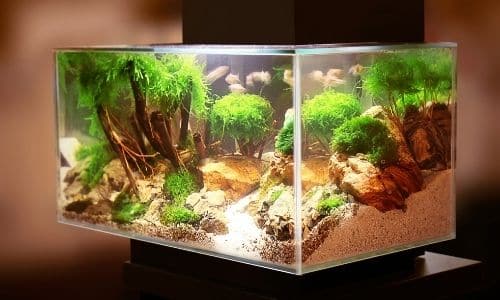
A tank’s salinity can be the most critical factor when it comes to the health and safety of your fish. Too much or too little salt can affect the wellness of your new friend. However, measuring the initial salinity isn’t quite enough. Knowing how fresh, brackish, and saltwater tanks differ in their setup can help you understand exactly what you need.
Freshwater Tank Must-Haves
Polished gravel is a good choice for freshwater tanks when deciding what to use to cover the bottom. Its porous nature allows good bacteria to grow. This gravel, layered with a bioactive substrate, is a great way to jump-start an ecosystem, especially if you’re trying to grow plants. The substrate should be about two to five centimeters deep for roots to grow. Plants help ensure the growth of bacteria, provide oxygen, and prevent algae buildup. Remember, having freshwater doesn’t automatically mean a tank is clean.
Water conditioners, strip tests, and filters are essential in keeping your ecosystem in check. They help measure and prevent toxins from building up inside the tank. Equally important are heaters and air pumps, especially if you’re housing exotic fish. Depending on your fish, you need to ensure that you oxygenate and heat the water to the proper levels.
Brackish Water Tank Needs
Every brackish water tank needs to be at a pH level somewhere between 7.2 and 8.5. You’ll also need a hydrometer to keep and measure the water’s gravity. Remember that every animal is different, so you’ll need to research what temperature and specific gravity your little friend will need.
Because brackish water exists between freshwater and saltwater, the fish here can be very picky. It isn’t easy to grow plants in this kind of water. Because of this, fake plants may be your best bet. However, you should avoid any decoration that your fish could easily bite off. You can use crushed coral and sand for the substrate to promote the proper pH and alkalinity.
Saltwater Tank Necessities
While knowing how fresh, brackish, and saltwater tanks differ is helpful, saltwater tanks can be the most difficult to have. This is due to the amount of equipment needed to set up a saltwater tank. This is mainly because the ocean’s salinity and temperature vary widely from coast to coast. Therefore, you must read up on your fish’s needs before setting up the tank.
When it comes to the ecosystem, sand beds provide a great source of nutrients that your coral will need. Coral is essential for any saltwater tank and can be very easy to maintain. Toadstools, Green Star Polyps, and bubble corals are easy to maintain and great for beginners. Remember to always do your research to find your pet’s precise needs.




